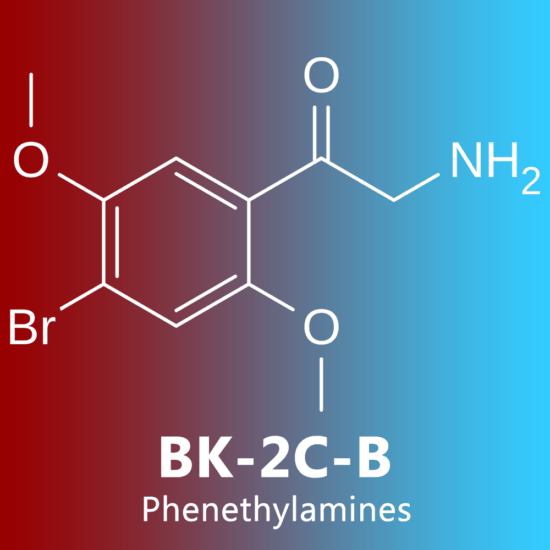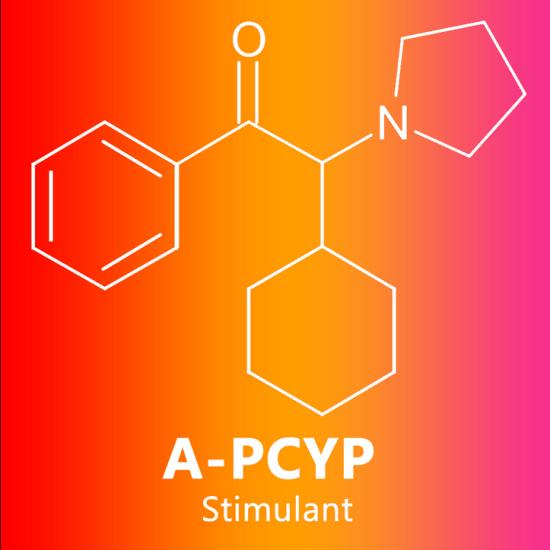6-APB NMR Results and Purity
As is the case with all 6-APB currently on the market, this product contains around 56% 6-APB succinate, 20% 4-APB isomer and 24% succinic acid. Succinic acid is an inactive chemical. 4-APB is a positional isomer of 6-APB and has been found to release NE, DA, and 5-HT in Rickli et al 2015. More can be read on this and other benzofurans here
The reason for this is pure 6-APB is quite unstable and very difficult to keep as a solid at a high level of purity.
An important note: almost all 6-APB (now and in the past) is between 50-60% purity, so we strongly suggest that you do not increase the amount you would usually conduct research with.
Please see the product image for the NMR spectra. Notes from the lab technician:
6-APB was confirmed, the quality is more or less as usual. Last time the sample didn’t fully dissolve in D2O, leaving an little bit of an oily residue. Earlier batches tended to dissolve but formed a slightly opaque and foamy aqueous (D2O) solution. I measured in DMSO-d6 this time to test if the oily residue would be visible in the 1H NMR spectrum, which it wasn’t. The 4-APB isomer was as usual about 20% of the base mixture. The percentage of 6-APB hydrogen succinate relative to excess succinic acid was 56%.
Responsible Research with 6-APB
Always practice responsible research. You should read and educate yourself before undertaking research with any chemical. The Psychonaut Wiki has some very helpful resources and information on 6-APB. This product is intended for forensic applications only.
WARNING! This product is not for human or veterinary use.
What is 6-APB?
6-(2-Aminopropyl)benzofuran (also known as 6-APB and “Benzofury”) is a novel entactogen substance of the benzofuran class. It is structurally related to entactogens like MDA, MDMA, 5-APB, and 5-MAPB.
6-APB was first synthesized in 1993 by David E. Nichols as a potential non-neurotoxic alternative to MDMA. However, it did not come into popular recreational use until over a decade later, where it briefly entered the rave scene and global research chemicals market. It was sold along with other novel benzofuran entactogens under the name “Benzofury” before its sale and import were subsequently banned.
Subjective effects include anxiety suppression, disinhibition, muscle relaxation, and euphoria. 6-APB’s effects are commonly compared to those of MDA and other entactogens.
Very little data exists about the pharmacological properties, metabolism, and toxicity of 6-APB, and it has only a brief history of human usage. It has been marketed alongside research chemical entactogens like 5-MAPB and 5-APB as a legal, grey-market alternative to MDMA, and is typically commercially distributed by online research chemical vendors. It is highly advised to use harm reduction practices if using this substance.
Chemical Properties
6-APB, also known as 6-(2-aminopropyl)benzofuran, is a synthetic molecule of the benzofuran class. The benzofuran class of substances are members of the amphetamine and phenylethylamine classes. Molecules of this class contain a phenethylamine core bound to an amino (NH2) group through an ethyl chain with an additional methyl substitution at Rα. 6-APB does not contain a methyl substitution on RN. It is composed of an oxygen-substituted benzofuran ring fused at R3 and R4 of the phenyl ring.
Notably, 6-APB shares this benzofuran ring with related compounds such as 5-APB, 5-MAPB, and 6-MAPB.
Three distinct batches have been in circulation since its initial release to markets. Originally, only hydrochloride was available, and its dosage range shared characteristics most similar to that of MDA in terms of dose-response. However, succinate and fumarate batches both entered the market, and have very different effects by weight, and vastly different loose bulk densities.
Pharmacological effects
6-APB is a serotonin-norepinephrineerotonin–norepinephrine–dopamine reuptake inhibitor (SNDRI) with Ki values of 117, 150, and 2698 nM for the norepinephrine transporter (NET), dopamine transporter (DAT), and serotonin transporter (SERT), respectively. 6-APB also possesses additional activity as a releasing agent of these monoamine neurotransmitters.
6-APB is a potent full agonist of the serotonin 5-HT2B receptor (Ki = 3.7 nM) with higher affinity for this target than any other site. Moreover, unlike MDMA, 6-APB shows 100-fold selectivity for the 5-HT2B receptor over the 5-HT2A and 5-HT2C receptors.
Aside from the 5-HT2B receptor, 6-APB has also been found to bind with high affinity to the α2C-adrenergic receptor subtype (Ki = 45 nM), although the clinical significance of this action is unknown.
The potent agonism of the 5-HT2B receptor makes it likely that 6-APB would be cardiotoxic with chronic or long-term use, as seen with other 5-HT2B receptor agonists such as the withdrawn serotonergic anorectic fenfluramine.
The monoamine neurotransmitters known as serotonin, dopamine, and noradrenaline are the global neurotransmitters that modulate the brain’s ability to feel pleasure, motivation, reward, planning, attention, and focus. When their reuptake is inhibited or their release is promoted, these neurotransmitters accumulate in the synaptic cleft (gaps between neurons) to non-ordinary levels, which makes them able to be reused. The result is neuronal activation at a multitude of brain regions which has the net result of producing a combination of stimulating, relaxing, disinhibiting, and euphoric effects.
Some of the most commonly reported effects are:
- Stimulation & Sedation
- Spontaneous physical sensations
- Tactile enhancement
- Bodily control enhancement
- Stamina enhancement
- Color enhancement
- Pattern recognition enhancement
- Distortions
- Tracers
- Symmetrical texture repetition
- Auditory enhancement
- Auditory hallucination
- Auditory distortion
- Existential self-realization
- Unity and interconnectedness
Some of the potential side-effects include:
- Temperature regulation suppression
- Increased bodily temperature
- Vibrating vision
- Abnormal heartbeat[citation needed]
- Increased heart rate[citation needed]
- Increased blood pressure[citation needed]
- Increased perspiration
- Dehydration
- Dry mouth
- Difficulty urinating
- Appetite suppression
- Pupil dilation
- Excessive yawning
- Temporary erectile dysfunction
- Teeth grinding
- Seizure
- Anxiety
- Appetite suppression
- Brain zaps
- Cognitive fatigue
- Depression
- Derealization
- Dream potentiation
- Sleep paralysis
- Irritability
- Motivation suppression
- Thought deceleration
- Thought disorganization
- Suicidal ideation
- Wakefulness
Legality
6-APB is classified as illegal in:
- Australia and New Zealand
- Canada
- Germany
- Italy
- Sweden
- Switzerland
- Turkey
- United Kingdom
- United States
This list is not exhaustive, so do your own research into the legal status in your country before ordering!
All of our chemicals are strictly for research and analytical purposes only and not for human consumption.
All products are strictly for research purposes only and not for human consumption.
Store in a cool, dry place away from sunlight. Lysergamides and Tryptamines should be kept below 20’c where possible






Reviews
There are no reviews yet.